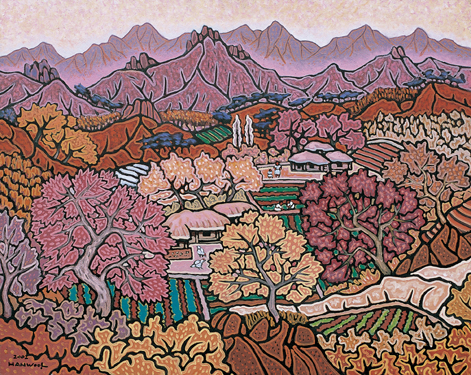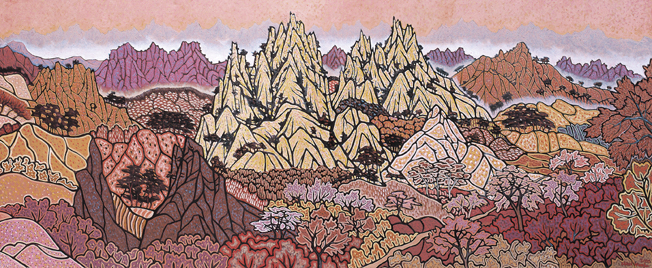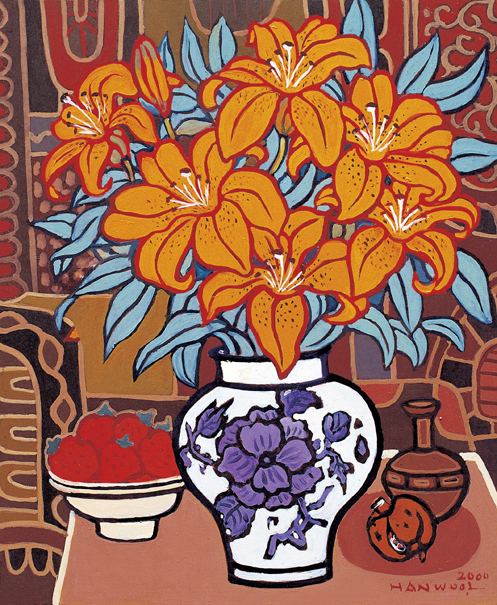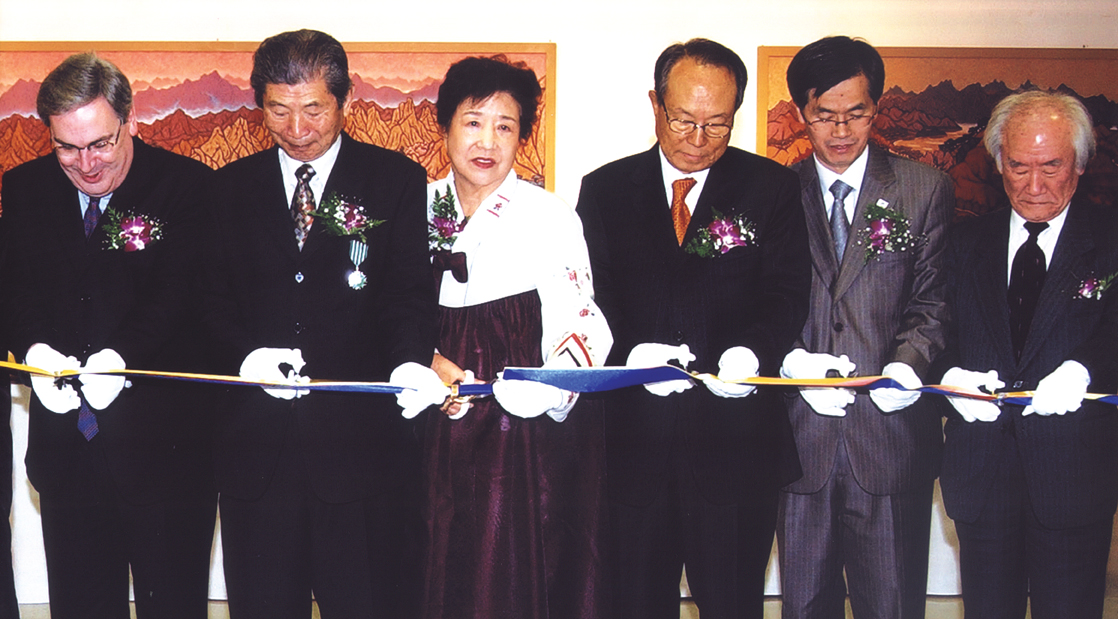'Our Beautiful Land'
Painter Lee Han-woo evokes nostalgia for the old days in the countryside thru his paintings






"Master painter Lee Han-woo's works make my pulse race every time I view them, which, I think, is caused by the sandy-brown color he uses so masterfully in his work, as it is the color that lies at the core of every Korean and awakens in them the realization of the traditional cultural legacy of Korea,"commented former culture minister Lee O-ryong in his critique of the master's paintings.
"The roads and mountain passes in the old days were that color and it was also the color associated with traditional rites. It doesn't matter whether colors were green or pink because all the colors in his art have brownish magnetic colors that pull our minds into the art,"the honorary professor of Ewha Woman's University continues.
"In Lee's artwork are mixed our cries and laughter as they are soaked in the brownish earth,"the former culture minister says.
He thinks that it would not be only Koreans. "In pre-historic times, paintings in grottos were in dark and brown colors because the ancient people got paints from earth and rocks. In later times, murals in old tombs were made in the same earthy tones. Therefore, Lee's artworks are the magnet that creates a space for a global sensation, which is the element that explains the popularity of his art in France,"the honorary professor says.
The lines in his paintings have unique Korean cultural genes. His paintings of 10 animals such as deer, phoenixes and tortoises, the symbols of longevity and traditional symbols for good fortune are very delicate and yet strong and smooth with angled lines having lives that don't belong to either sex.
His paintings of things are simple, very close to their original forms. Trees, houses, mountains and people are all reduced to a cell and look as though they could pop as soon as they are touched since they are so tightly put together.
Lee's pieces are done so plainly that they give off calm waves, like a water surface putting viewers at ease.
The painter does not use formal language. He uses very pure provincial accents,



very heartening to viewers, as if the artworks are done in their own native languages. Viewers of his art could hear all kinds of words while watching his pieces such as the words of a grandfather whispering to his unborn grandchildren or people talking in refined French or rough Swahili and other exotic foreign languages.
The painter said his artwork included paintings of paddies and other fields, winding alleys in the countryside against the backdrop of hills, because hills protect the fields and villages like screens.
In the meantime, Kim Young-ho, professor of Art History at Choong-Ang University, and also an art critic, said the painter, in his early 80s, continues to experiment with his painting style to create a new music in his scenery paintings.
His method to express his ideas of natural scenes in the countryside is in his use of lines. First, the lines are boundaries of mountains, rivers, paddies and fields and the outlines of clouds, trees, and hills. These lines make up the tops of hills and screens of rocks, but they are lines that are over the boundaries that separate outlines and forms that describe art objects.
In the 1990s, Lee painted the lines narrower while the objects became larger and more daring. The lines of mountain peaks that double and the lakes and paddies with their delicate lines and trees that cover the margins are linked like lungs -- as if to give life to the paintings. They are like human bodies that maintain their lives with blood vessels inside their skin.
His paintings are unique because their components are described in incredibly great detail through the soft lines. He gives vitality to the objects in his paintings by surrounding them with detailed black lines.
Lee likes to use warm, earth-tone colors. For the artist, those colors are special. "Warm earth-tone colors just represent the Korean people's warm-hearted dispositions. Those colors remind us of our hometown because we all come from the soil at birth and go back to it in death."When he was 75, Lee went to France with the ambition to truly learn the art of painting in the art capital of the world, Paris. This was a landmark event in his life. Through exhibitions at prestigious galleries in France, he was able to introduce Korean art on a global scale. Lee's art reached its climax when he held an exhibition supported by the French Senate at Orangerie du Luxemburg in Paris in 2005. Owing to the great success of the exhibition, he was conferred the Chevalier des Arts et des Lettres, an honor conferred to international artists by the French government for their contribution to the global exchange of culture and art. nw
Our Beautiful Land 315Ąż130cm Oil on Canvas 1992
Painter
Lee Han-woo
Our Beautiful Land 53.0Ąż45.5cm Oil on Canvas 2002
Our Beautiful Land 116.8Ąż80.3cm Oil on Canvas 2001
Our Beautiful Land 315Ąż130cm Oil on Canvas 2000
Our Beautiful Land 162Ąż112cm Oil on Canvas 2002
A Thatched-roof House In Summer 90.9Ąż72.7cm Oil on Canvas 1997
Our Beautiful Land 72.7Ąż90.9cm Oil on Canvas 2006
Nari Flower and Stills 45.5Ąż37.9cm Oil on Canvas 2000
3Fl, 292-47, Shindang 6-dong, Chung-gu, Seoul, Korea 100-456
Tel : 82-2-2235-6114 / Fax : 82-2-2235-0799